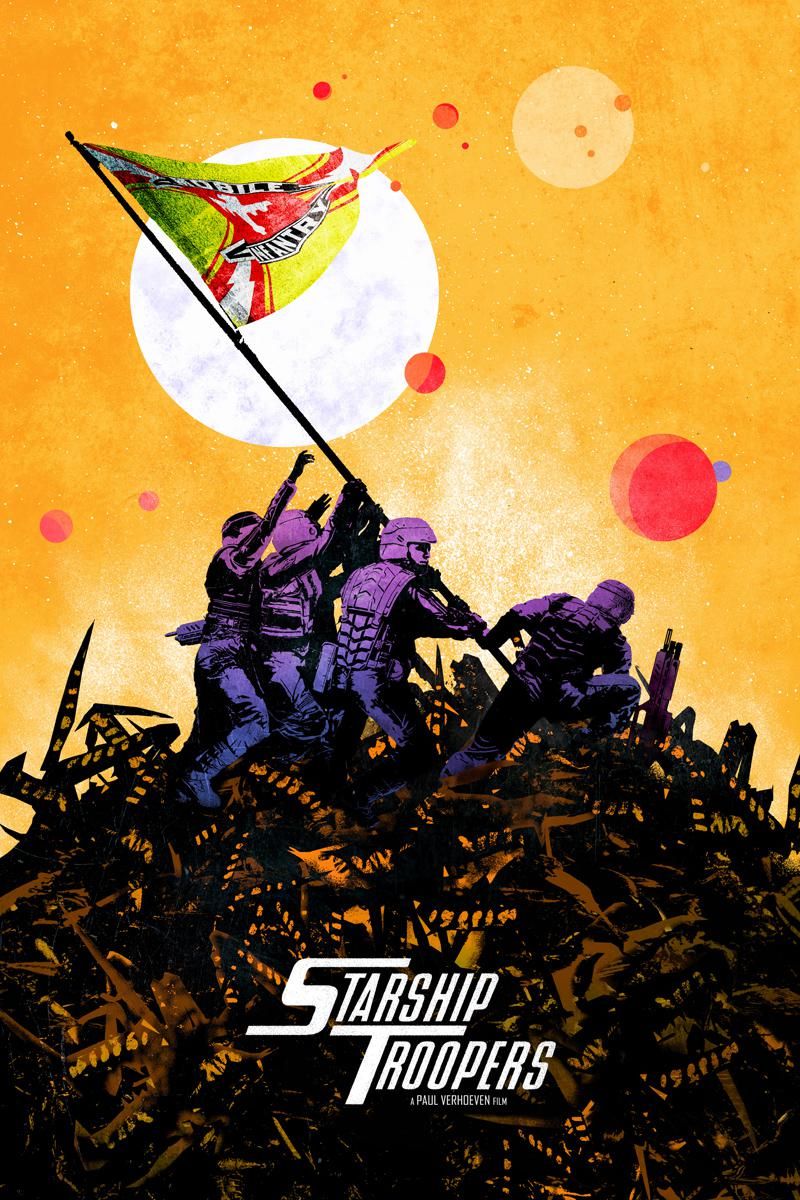
 The gang is back with a special guest and our first full Half Assed Review in a long time. This time around we're doing Starship Troopers! As always, Listen and Enjoy! Thanks for stopping by.
0 Comments
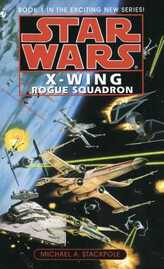 Yub, Yub, Commander - My Thoughts on Charting a New Flight By the Doctor I have a lot of feelings about Rogue Squadron. As you’ll know if you read my most recent H.A.R. “Retro Review” on Courtship of Princess Leia (or, perhaps, if you follow me on Twitter @Lemoncakesong), I just finished re-reading the X-Wing series of Star Wars Legends books. And if you pay attention to Star Wars news, you’ll know that one of the potential upcoming live-action projects coming out of the Star Wars media franchise is a film about that most famous of X-wing squadrons: Rogue Squadron. And that’s all we know about it! And we don’t even know that for sure! Since the film’s announcement we’ve been told it was going to be directed by Patty Jenkins, we’ve been told it was no longer going to be directed by Patty Jenkins, the film was shelved, the film was unshelved, the film might still be directed by Patty Jenkins. At this point, details are beyond slim. However, to the best of my knowledge, we’re still expecting a film about Rogue Squadron to happen in some form. And as someone who has loved her some Rogues, I have some thoughts about that. If you’re not familiar with them, the Rogue Squadron books are a subsection of the X-Wing series of novels that were initially published from 1996-1999 with a final novel added to the series in 2012, as part of the Expanded Universe (or EU, now known as Legends). The series was written by Michael A. Stackpole and Aaron Allston, with Stackpole writing five books about Rogue Squadron, and Allston writing four about a different X-Wing squadron, Wraith Squadron, plus a fifth book by Allston, Starfighters of Adumar, which is technically about neither squadron but I think we could categorize more as a Rogue Squadron book than anything, given that it’s about four members of that squadron (Wedge Antilles, Tycho Celchu, Wes Janson, and Derek “Hobbie” Klivian) on a specialized diplomatic mission to Adumar. Please believe me that when I say I have a lot of feelings about Rogue Squadron, I mean a lot of feelings (I’m a woman of a lot of feelings and a lot of thoughts, ask Berg). I love these books. But it’s not just that I think they’re good; these books and I have a history. They’re comfort reading to me. I cannot tell you how many times I have re-read them since I was a kid, because there was a period of time where I was re-reading them more than once a year. They moved with me from Portland to New Zealand, across a series of moves in Wellington, and back from New Zealand to Portland again. I can recite to you my favorite quote from the series (which comes from one of the Wraith Squadron books [Solo Command] yes, but from a man who more than anything is a Rogue, Wes Janson) “you can’t look dignified when you’re having fun”, without looking at the book for reference. And I could have done that without having just re-read them (again, ask Berg, I quoted it at him before I even got to Solo Command in my re-read, and that was having not read the books in almost a decade [not from lack of love or interest, but grad school ate my life for a while]). And it’s not just that it’s a good quote, it's the meaning behind it. Wes is the squadron prankster, he’s a delightful dork who keeps Wedge on his toes and does things like smuggle in a fake Ewok to keep up his running gag that a new recruit applying to Wraith Squadron is an Ewok (“yub, yub, Commander”). But “you can’t look dignified when you’re having fun” is said to another member of the squadron, Myn Donos, who is dealing with PTSD and grief over the loss of his former squadron, a man who has forgotten how to unclench and enjoy life, to let others in, to not be so concerned with looking dignified. I think people might look at these books and think perhaps “ah, X-wing books, those are just going to be superficial military science fiction” (setting aside the utter inanity of assuming military science fiction is somehow less literary, that’s a subject for a different article); but these books are intelligent, they’re well written, they’re at times poignant (please know that when I tell you I cry every time I read Iron Fist I am in no way exaggerating), they have given us some of my favorite characters in Star Wars literature, and they’re immensely re-readable. I love these books. So, yes, I have some thoughts on the upcoming film, should we actually get it. And I do want a Rogue Squadron film. But, and this may surprise you after everything I’ve just told you about my love of these books, I don’t want the film to adapt the books. I don’t think they could do it in any way that would add anything to what the books have already given us, and I think it would ultimately be inherently flawed and unsatisfying. First of all, the Star Wars film universe has already diverged so far from the EU that it would be impossible to faithfully make a film out of any of the Rogue Squadron books. Don’t get me started on the fact that technically Hobbie is dead in the canon, that’s one of those things that I acknowledge is a fact of the new canon and choose to prefer the EU as my personal internal truth. Hobbie lives (in the pages of the books). [And yes, I realize that Hobbie doesn’t actually feature in the first four Rogue Squadron books, this is just an example of one of the most egregious differences between canon Rogue Squadron and Legends Rogue Squadron as far as I’m concerned.] Then you get into all the traditional problems of adaptation, of taking characters that have only lived in our heads and committing them to screen. I’m not saying good adaptations aren’t possible, but I think that given the constraints again of not just adapting but of translating Legends into canon, on top of the constraints of adaptation, I’d rather they not. Particularly not, again, after how we’ve seen the new canon deal with aspects of Legends before. Honestly, I think if they use entirely new characters, outside of Wedge Antilles (you can’t make a Rogue Squadron anything without Wedge), that may even be their best option. We know so little about this film, including when in the timeline it’s going to be set, that it’s hard to even speculate about what kind of story I’d like to see in it. But I can say that what I’d like to see is a wholly fresh story, that draws on the spirit of the existing Rogues, that humor, that intelligence, that heart. Remember people, you can’t look dignified when you’re having fun. 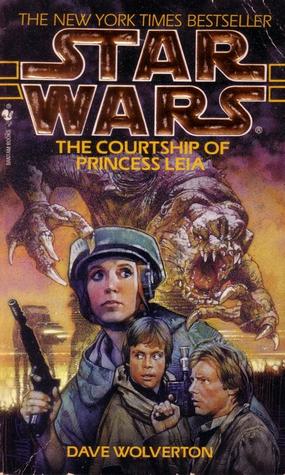 Star Wars: The Courtship of Princess Leia By the Doctor Okay, before we get into this it’s important to me that I start by letting you know this book and I have a history; I have loved it before. Courtship of Princess Leia, by Dave Wolverton, was my first Star Wars book back when I was a kid, before the prequels when the only movies that existed were the original trilogy. It was my introduction to a world beyond the movies, to the continuing adventures of Han, Leia, and Luke, to the captivating, entertaining, complex world of the Expanded Universe (EU). This is the book that introduced me to the EU and it’s the book that got me hooked on the EU, and I loved it a lot. I re-read it many times between discovering it around age 10 in 1996, and when my Star Wars reading fell off when I entered grad school in 2013. But it’s 2022 now, and it’s been at least almost a decade since I’d last read it. If you listened to the episode of the podcast where Berg interviewed me (here), you heard us disagree on the relative merits of the book - me speaking from my memories of loving it proclaiming it a great entertaining book with a fun story, him having never been captivated by it claiming that it’s not actually a good book. If you’ve been following along with the writing I’ve been posting here and/or with me on Twitter (@Lemoncakesong), you’ll be shocked I’m sure to learn that this conversation provoked a desire in me to re-read the book and write what I’m calling a retro-review. Unlike the last time I reviewed a book for HAR (for Thrawn Ascendancy: Lesser Evil which you can read here), I’m using Berg’s usual HAR format for this one because, let me just state it up front: he was right. There’s some solid bad and some solid ugly. But there’s also some good! I’m not wrong that there are redeeming qualities in this book, and we’ll talk more about it in the conclusion to this review, after I’ve presented you with my findings. The Good: Here’s where I was right - it genuinely is an entertaining story. It’s a fun adventure romp that feels very much like the sort of romantic action-adventure thing we might have gotten in a movie in the early 90s. It’s also got a lot of great attempts at building out our knowledge of the Force, and how the use of the Dark Side affects users of it both mentally and physically. It also takes a crack at establishing some Jedi lore and while this doesn’t match up with stuff that later gets fleshed out more in the EU, especially post the Prequel Era, it’s not a bad effort at all. It also introduces characters who later become important parts of the EU; for instance, it’s from Isolder and Teneniel Djo that we get their daughter Tenel Ka. And this is also the book that introduces Warlord Zsinj, who, if you have never read the Wraith Squadron books in the Star Wars: X-Wing book series, is possibly one of the most amusing and entertaining Imperial villains. He is literally a mustache-twirling villain, and the humor pacing of his lines is so delightfully written…stop me before I start a writing project on the X-Wing books. But he, and his history with Han Solo (“I, uh, don’t remember the exact words, but I personally took credit for blowing up his ship and said something like ‘Kiss my Wookie!’”) start here, and as a huge fan of the Wraith Squadron books (no really, I just re-read them, I don’t need to re-read them again for a paper…) I’m grateful for his introduction here. On a personal note, I just realized/remembered while reading it that I think this is the book that first introduced tiny me to the concept that you could look at a star and see it as it was not as it is, because if you had a powerful enough telescope “you would be seeing light that reflected off their world hundreds of years ago. Since the light is just reaching us, you would be looking into their past”. That concept stuck with me, and I think that’s beautiful. The Bad: Berg and I talked about what I’m about to say while I was in the middle of reading the book, and was having mixed feelings because I didn’t want to totally disparage a book I had loved, but had found that he was right, there was a lot wrong with it. He pointed out that we have to take the context of the time in which it was written into consideration. Courtship of Princess Leia was published in 1994, which is pretty early even for the EU. It’s not the earliest book by any stretch (for instance the Heir to the Empire trilogy had already been published), but it still pre-dates a large percentage of the EU, and thus predates a lot of the established canon within that universe. With that said, there’s some things that ring false. Han and Leia aren’t particularly characterized in ways that fit with their characters as we saw them before and since in other EU literature. I get it, they had to be forced into this confrontational state in order to drive the plot of the book as it was contrived, but Leia suddenly not loving him feels forced and rings wrong (frankly, given everything we know about these characters, and about her, it’s ludicrous). So does some of Han’s less evolved confrontational language (he’s grown at least a little since A New Hope, and it really doesn’t seem like it here). As the book progresses, and we get Luke, he’s characterized fairly well (although there’s one scene that feels to me like a bit of a rip-off of the Superman revival scene in Batman: The Dark Knight Returns but we’re not going to get into that here because I’m not writing a full analysis article, come talk to me about it on Twitter or in the comments if you want more on that), so it’s not Wolverton being incapable of nailing the characters. Frankly I think it might be a little bit of a failing in his ability to write women, because Leia is more egregiously mischaracterized by Han, and as we’re about to get to I have some problems with the way women at large are represented in the book. The Ugly: Buckle up, this is where it really gets rough: Han shoots Leia with a mind-control gun (the Hapan “Gun of Command”) in order to force her to go with him to Dathomir. Just, no. There’s also Han telling Chewie “I suppose mating rituals are much simpler where you come from. When you love a woman, you probably just bite her on the neck and drag her to your tree” – A) Han knows the Wookiee culture (and Chewie!) better than that and B) again, no, just no. There’s also both the Hapans and the Force witches of Dathomir, and while I think what Wolverton is going for here is a mirroring of the two cultures so you can get moments like when Teneniel Djo points out that her culture isn’t any more barbaric than Isolder’s is in the treatment of their men by their women, even though her world has less “civilization” from a technological/wealth standpoint. Still, from a modern perspective both cultures read a little bit as if they are the ultimate nightmare version of what certain toxic sections of the population think feminism is. But again, I do think we can cut the book a little slack here as being a product of its time, or, rather, that it didn’t have the cultural context then for such topics as we do as readers now. That’s not to suggest we don’t recognize the problematic nature of a lot of this, but just that it can be read as not malicious on the part of Wolverton, but as a failing of the time. Takeaway: On that note, you know what - again, Berg was right, it’s not, from a technical standpoint a great book; however, I’m going to stand by it’s a fun entertaining romp that deserves to be read. I maintain my earlier claim that if you still enjoy fun, actiony, slightly nonsensical 80s/90s movies with a dash of romance (albeit strongly presented through the male gaze) you’ll find, like me, enough redeeming qualities in this to enjoy it. Thrawn Ascendant: How an Evil Genius Villain Became a Sympathetic Antihero By the Doctor The following article is an expanded edition of my article "Thrawn Ascendant: How an Evil Genius Villain Became a Sympathetic Antihero" which can be found here on Eleven-ThirtyEight. The expanded edition offers more direct literary analysis of the text, as well as some discussion of my own preconceptions of Thrawn, and some notes on the discussions Berg and I had prior to my starting this project, and as is it is distinctly longer (though not even remotely as long as my article on the Republic Commando books) we offer it as a PDF. Berg and I should have an episode of the podcast where we discuss this further up soon, and if any of you want to talk to me about it I'd totally love to hear from you, either here or on our twitter @TalkingTrekWars or my own @Lemoncakesong
What Does it Mean to Say “My Star Wars”? Traverse the internet and social media these days and you’ll frequently read or hear about someone referring to “their” Star Wars. It is so common that I feel like most just take it to mean that which they identify with the most. However, I disagree in part with that perspective. Star Wars is generational. Every generation has their new piece of Star Wars that they grow up with, and is inherently theirs because it spoke to them at their specific point in development. If we take the words of The Maker, George Lucas, to heart, then Star Wars is aimed at kids. Specifically kids in the age range of 8 to 12. Historically, Star Wars was always rated PG (granted this was the only one of three ratings it could receive for the first three films) and it wasn’t until Episode III that it received its first PG-13 rating, meaning it was parental guidance suggested. Now, I’m not stating that these films aren’t accessible or enjoyable for adults, quite the contrary, I’m only stating that the target demographic that would learn the most from these morality plays are the young that are impressionable and developing into adulthood. 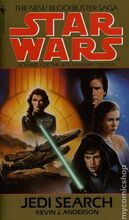 The Dark Times I was born in the early 1980s and Return of the Jedi was released when I was still too young to know or care. But being a child of the 80s meant I came into awareness of Star Wars at a young age because it was still everywhere. The Ewok movies came out when I was very young but I can remember renting the VHS tapes to watch and also having recorded copies of the Original Trilogy that we made from broadcast television. However, there were no new theatrical releases and the Special Editions would not be released until 1997. This has come to be known as the “Dark Times.” After those Ewok movies, which were originally aired on television in the United States, the only real new Star Wars content we had were roleplaying game source books, the occasional video game based on the Original Trilogy, and in 1991 the relaunched Expanded Universe (or EU, now Legends). This was my 8 to 12 years old reality! As I’ve stated in other reviews written for Talking Trek Wars, it was my Mom that bought me my first Star Wars book as she felt it would get me to actually read, and boy, oh boy, was she right. I took to them like a moth to light. You see, it was difficult being a fan in those days. To most of the rest of the world Star Wars was a dead property. People acknowledged its pop culture significance in the past but with the conclusion of Return of the Jedi it was not a part of the mainstream. Sure we had other science fiction properties to entertain us, which is one of the reasons I’m also a Star Trek fan, as that property was alive and well and churning out product. But as much as I love Trek, it wasn’t Star Wars, which was my first love. The thing that fired my imagination, consumed my dreams. I needed to know what happened to Luke Skywalker and the Jedi after the defeat of the Empire! Timothy Zahn’s Heir to the Empire trilogy was great and beloved by fans, and still is to this day; however, that was not what hooked me. It was Kevin J. Anderson’s Jedi Academy trilogy that did it. It was the answer to my dreams of what became of Luke and the new Jedi. Not only did it move the post Original Trilogy Jedi forward but it also tied into the Dark Horse comics of Tales of the Jedi set 5,000 years prior to the events of A New Hope. This is when I knew that the literature side of Star Wars would be my jam. By the time I was in my early teens Shadows of the Empire was published and a year later the Special Editions would be released. As I was coming into my late teens and graduating high school, the prequel trilogy would begin and be Star Wars for another younger burgeoning fanbase. Sure, adults and teens were excited as well but as hindsight will remind us, they didn’t take to them the way kids did, further supporting George Lucas’ claim that Star Wars is for kids. The New Jedi Order With that personal knowledge of me and why “my” Star Wars is the EU, imagine sitting in your living room in front of a TV. You know the prequel hype is in full swing with toys and advertisements everywhere. Whisper Episode I into the air and ears perk up to absorb any possible info. But on your television screen comes an image and a voice. It’s Luke Skywalker, he sounds scared and is talking about not being prepared for what is coming. Then the title card flashes and it says Star Wars: The New Jedi order coming from Del Rey books! As excited as I was for the prequels, this one little commercial did enough to divert my attention. It was a continuation of “my” Star Wars, in the format that I loved, with a new enemy. Long since had the books wore out the Imperial Remnant and new Imperial Warlords as the principal villains. Sometimes we got a new Jedi turned dark, or even an ancient relic of the past shaking up the present, but in truth it had become derivative. Whether you like it or not, The New Jedi Order (NJO) shook things up within the Star Wars universe, with a 19 book series plus several e-books written by a bevy of Star Wars veteran authors, and some new ones that would kick it up a notch to devastating heights. As we learned in the first book, Vector Prime by R.A. Salvatore released in 1999, no character was safe and neither was the galaxy. Finally, there would be real stakes and you couldn’t read the story with the knowledge that our beloved characters would always make it home. It is safe to say I was again hooked instantly and in love. 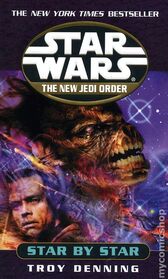 Anakin Solo Would you find it strange to read that my all time favorite character is one that will never be seen on screen, whether it is in a video game, live action media, or even animation? It is true. Anakin Solo, youngest son to Han Solo and Leia Organa Solo, brother to Jacen and Jaina Solo is my one true favorite character. [My second favorite, Kal Skirata, is another literature only character but that is saved for another time or go read the Doctor’s paper on the Republic Commando series (here) and discover why] Anakin was young, carried the hopes and dreams of the new Jedi order as heir to Luke Skywalker even more so than his siblings, was touched in the womb by the reborn Emperor, and represented his mother’s forgiveness of her father by being named after Anakin Skywalker. The weight that he carried as a character endeared him to me. In the first five books of the NJO he saw his father’s best friend die for him, was trained by Luke and Mara Jade Skywalker, was one of the strongest fighters to face the Yuuzhan Vong, and saw his family separated by strife. And yet he still carried on. As a character he was that perfect mixture of Luke and Han. Whereas Jacen was more Leia and Jaina was more Han, it was in Anakin that we saw the light of the Jedi and what we believed to be the future of the order. Alas, it was not to be. In Star Wars: The New Jedi Order: Star by Star by Troy Denning, Anakin would sacrifice himself and die to save his siblings, burgeoning romantic love interest, and friends, to ensure their survival and escape in what is to me the best Jedi death EVER! The book was released in October of 2001 and I remember buying the book the morning the store opened and consuming at a furious pace the tale until those fateful pages had me crying and questioning whether I even wanted to continue. This is why I love Star Wars. This was why I loved Star Wars literature, my Star Wars. Greg Keyes Now to take a step back to shortly before Star by Star. The NJO had its detractors, and some felt that it was too dark. Prior to that book there was originally a trilogy planned tentatively titled Knightfall, in which the story would get even darker. Also at this time production was underway on Episode II with Anakin Skywalker featuring even more prominently than in The Phantom Menace. Now, rumor has it (this is not confirmed), that Anakin Solo wasn’t going to die in Star by Star and it was to be Jacen Solo that sacrificed himself; however, it was George Lucas himself that felt it should be Anakin Solo that should die so there wouldn’t be fan confusion between the two characters, and Anakin’s fate was sealed. The hitch was that the writers hadn’t really set this up as Jacen and Jaina had received more focus in the storytelling up to this point so with the cancellation of the Knightfall trilogy and the change in character direction, Greg Keyes’ Edge of Victory duology was born. They were to be almost principally focused on Anakin and help provide the narrative gut punch that was to be Star by Star. Greg Keyes did a masterful job. Not only did he make you believe even more in Anakin as a character, he did what others in the past had done and drew on previous media to give those connective tissues, primarily pulling on the Anakin Solo junior grade books, the Junior Jedi Knight series. He also wrote a short work of fiction that appeared across Star Wars Gamer and Insider magazines featuring a character from that junior series as well. The Gift
That short work of fiction was the gift recently given to me. Now, I had actually read the conclusion as I had that copy of Insider, but I had never read the whole story before. For a time it was free on the Star Wars website, then also a part of their Hyperspace membership, but at that time the prequels were still coming out along with corresponding literature, the NJO was in full swing, and I was also knee deep in college. Somehow, this fiction, Emissary of the Void by Greg Keyes, got lost amongst all of this from my radar. Imagine if you can, being gifted what you once thought lost to you, from your favorite era, now relegated to Legends and not to be published again but made yours once more. It was a “Force Back” of memories. I was transported back 21 years ago to another time, another life. The story itself is a lovely build up post Edge of Victory and pre Star by Star, but in all honesty, the content doesn’t really matter to me and there’s no way for me to review it objectively. I was going to love this no matter what. The status of the EU being Legends and the future of Star Wars being altered for the Sequel Trilogy doesn’t diminish or remove my memories of a time when my Star Wars fired my imagination and gave me hope. I love Star Wars, all Star Wars. Some may not be meant for me, or may not meet my expectations of what I’d like to see but I would never take away another child’s turn to discover theirs. 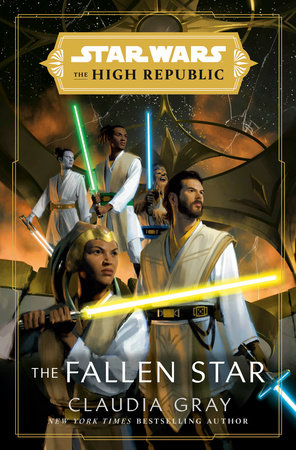 Star Wars: The High Republic: The Fallen Star By Berg Greetings ladies and gentlemen, and our readers! Welcome back to another H.A.R. of Star Wars: The High Republic with the latest and final installment of Phase 1 and the first offering of Wave 3, The Fallen Star. As this is the conclusion of Phase 1, author Claudia Gray has the job of wrapping up major storylines and leaving the audience wanting more. Overview: The Jedi and Republic believe they’ve got the Nihil on the run and all but finished; however, the Eye of the Nihil, Marchion Ro, has other plans. With the relief effort focused on and through Starlight Beacon as the symbol of The Great Works, it becomes the main target for the evil machinations of the Eye and nothing will ever be the same! The Good: Bottle Episode. So hear me out. I know plenty of people that frown on a bottle episode, but if it’s done correctly it can be very effective. Having nearly all of the novel set on Starlight Beacon helps with the rising tension and allows the reader to get an ever better understanding of the station itself. As it has appeared in previous novels and comics it really brings the backdrop to the forefront. Being this contained also has the effect of providing a feeling of claustrophobia which adds to the tension of the story. Elzar and the Jedi. I’ve written about this character in my previous two High Republic reviews and this one is no different. We get to really dive into a Jedi character really struggling and coming to terms with the darkness inside him. We’re taken on his journey from recovery and acceptance to having to deal with his darkness head-on and lead. The best part is it’s a level of depth into a character’s struggles that I feel we haven’t got to witness before. However, it is not just Elzar that we take a journey with. All of our Jedi characters, from Stellan to Orla, show us a complex range of Jedi struggling with their confusion in the Force and coming to terms with not having as much power as before. Furthermore, we as the reader have to watch our characters continually make the wrong decision and “live” with the consequences. Trilogy. The Fallen Star marks the end of the Light of the Jedi trilogy of adult novels. As well as being the backbone of Phase 1, these three also have the responsibility of introducing a whole new unexplored era in the Canon. I feel like it has been a resounding success. I’ve taken to most of the characters and desperately want to know what comes next! The Mixed Bag: Diminishing Cast. Much like the bottle episode trope this book leans heavily into the familiar method of introducing and eliminating the cast as the tension and events proceed. It is effective because once it begins and you, as the reader, realize it is happening you begin to hope that whomever is your favorite doesn’t meet that fateful end. The reason this is partially in the “Bad” category is that we are introduced to brand new characters not previously shown in any of the other material and they get equally knocked off so any emotional investment is minor and their death comes across as not being earned. The Bad: Dramatis Personae. Yes, I’ve written about this in both of my High Republic reviews. Yes, it might be an annoying gripe by this point but I will continue to speak about it. After a year of adult novels, YA novels, middle grade books, and comics there have been characters introduced in every release, so much so that there are times when it becomes difficult to remember who is who. In fact, upon starting this book there were some that I had trouble recalling. Multimodal Narrative. Previously this has been placed in the “Good” section, however, here I have the opposite feeling. There is a portion of this book that feels purposely left out as if it might be covered elsewhere. Now, this has happened with other releases in Phase 1, but here it feels as if a vital chunk of the story is reserved for release in another medium. If said story was released concurrently this might not be an issue. Another aspect of this is publishing issues. The middle grade book, with events that directly precede this story, has had its physical release delayed until March. There is information contained within that book that relates to a character's affiliation that when read here comes as a shock and makes you feel like you really missed something or are questioning your memory. It is possible to read this story if you purchase the ebook, but with it being very short and such a quick read it does not make financial sense to buy it if you intend to get the physical copy for your collection. The Ugly: The Future. With the middle grade being set prior to this novel and the YA release (coming in February) taking place on another planet concurrent to this story, the ending of The Fallen Star leaves us on a cliffhanger of sorts. However, the beginning of Phase 2 later this year starts a prequel storyline set 150 before the start of Phase 1 and Light of the Jedi. I’m not saying they are going to be bad stories or not serve a purpose to the overall narrative, but we won’t be getting forward progression. That is why I have an “Ugly” category entry for the first time. Conclusion: The Fallen Star takes a minute to get going but then holds us on a knife’s edge until the end. Despite my gripes it is a satisfying conclusion to the narrative presented in Phase 1. More than ever I feel privileged to be a Star Wars literature fan as I feel like I’m back in the late ‘90s/early ‘00s with great EU storylines that tell actual events with consequences for all characters involved. 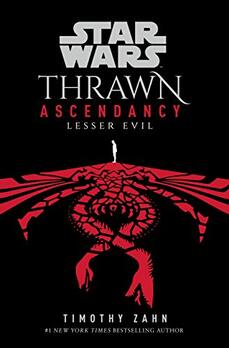 Star Wars: Thrawn Ascendancy: Lesser Evil By the Doctor Greetings Ladies and Gentlemen, and our readers! The Doctor is in, and I’ve got a review of Star Wars: Thrawn Ascendancy: Lesser Evil by Timothy Zahn for you. This is the third book in Zahn’s Ascendancy trilogy (which also includes Chaos Rising and Greater Good), and since Berg hasn’t reviewed those for you before, I’m going to touch on all three books a little, in order to talk about Lesser Evil as a part of the whole. The Ascendancy trilogy is set at the tail end of the Clone Wars. According to the timeline in the front of Lesser Evil, all three books are set in-between Attack of the Clones and Revenge of the Sith – but it’s actually a little more complicated than that. Without getting in to spoilers, I’d agree that you could place the first book, Chaos Rising, firmly there, but based on...certain revelations at the end of Lesser Evil, Greater Good is probably dipping in to the timeline of Revenge of the Sith and certainly Lesser Evil post-dates it, at least partially. That said, this is not a criticism of the choice to place these on the timeline as they have been – for aesthetic and clarity purposes the choice to group all three books in the trilogy together makes sense, particularly as the events in each book follow on directly from the conclusion in the previous. [Side bar, if you’re as fascinated as I am by these kinds of editorial choices with regards to supplementary material such as the timeline, one of the editors at Del Rey, Tom aka @DarthInternous on Twitter, has a fascinating Twitter thread regarding the evolution of the timeline included in Star Wars novels from the Legends/Expanded Universe days to the New Canon, which you can read here.] To some extent, the precise timing of the Ascendancy trilogy doesn’t matter a great deal anyway. These books take place almost entirely in the domain of the Chiss Ascendancy, with only one (extremely well done, delightful, brilliantly written, color me both pleased and impressed) foray into Republic space that takes place in Chaos Rising (I cannot say anything about it without giving it away, and the surprise is worth it, so just read it. It’s the first book in the trilogy, so you’re not needing to read through the whole thing before finding out if you agree with me or not). However, these books are actually setting up the groundwork for the next Thrawn trilogy (which Zahn, pulling a Lucas you could say, actually wrote first and is already complete, so once you finish the Ascendancy trilogy you can continue right along with Thrawn in … Thrawn. That’s it, it’s just Thrawn [followed by Thrawn: Alliances and Thrawn: Treason]). That trilogy does directly interact with our “main” Republic timeline of events, and indeed, the touch points that Zahn offers in the Ascendancy books, and in Lesser Evil in particular, do a good job of grounding our sense of “when”. This is important, because as I stated before, Ascendancy offers very little in the familiar, outside of our favorite blue-skinned red-eyed Grand Admiral (here Senior Captain Mitth’raw’nuruodo). If you have read Zahn’s previous New Canon trilogy, there are some other familiar Chiss faces you’ll enjoy having back in this book (including one of my favorite badass Admirals, Ar’alani). But otherwise, at first blush these books could practically be read as their own universe separate from Star Wars. They get very heavily, at times densely, in to Chiss politics, both with respects to the Expansionary Defense Fleet (of which Senior Captain Thrawn is a part) and its relation to the Chiss governing body of the Syndicure, but also with regards to Chiss family politics which… complicated is not a strong enough word. And when I say Chiss family politics, we’re not talking about merely blood relatives and arguments amongst parents and children, but a governing system that involves the Nine Ruling Families, 40 lesser families, and internal political hierarchy within all of those families that dictates who has rank/power over who/what elements of the larger system. Helpfully, all three Ascendancy books contain not just a Dramatis Personae, but also a reference list to family ranks, political hierarchy, and military ranks within the Chiss Ascendancy (all of these are very much appreciated. Berg has written before about how the Dramatis Personae has been lacking in New Canon books such as the High Republic novels to their slight detriment, and I agree that it would have been useful in those books. I applaud the Dramatis Personae being used in the Ascendancy novels, particularly with the complex Chiss political structuring). For me, none of the above is a negative. I love the weird dense politics of the Chiss, the completely new territory of the Ascendancy, the way that these books are seemingly doing their own thing but actually are setting up elements that later tie in to the larger canon. Frankly, it’s all so immersive that it doesn’t take long to pick up the Chiss military and family political structuring, or the naming conventions. It’s actually absolutely fascinating! That said, your Doctor is a weird nerd for that kind of thing, and I can see how if you weren’t this could be a little too dense and possibly confusing. For readers who are expecting the Republic, the Jedi, or any familiar elements outside of Thrawn, you’re going to be disappointed. But if you come to it with an open mind, it offers an enrichment of the Star Wars universe by treading new ground rather than re-hashing the same places/characters/events. The trilogy, and Lesser Evil in particular as the conclusion, are very Zahn, by which I mean there are a lot of “oh fuck!” (yours truly said this out loud on multiple occasions while reading) moments where he makes a connection or a reveal of some detail that you weren’t expecting. There’s also plenty of both MacGuffins and uses of the Chekhov’s Gun principle. All three books include both the main timeline of the narrative and interlude chapters titled “Memories” which flashback to events prior to the main timeline that inform the main narrative both reflectively thematically and more practically by setting up events that later pay off in some of those “oh fuck!” moments. The only real “bad” for me is (and this is about to be very very pedantic in a your-Doctor-is-a-book-nerd-who-used-to-work-in-publishing kind of way) the inconsistency in the binding of the books. Chaos Rising has black binding and blue edged pages. Greater Good has black binding but no blue edging. Lesser Evil has a cream binding and no blue edging. This is so very minor I feel ridiculous even typing it but I bring it up largely because I did find the blue edging on Chaos Rising a little distracting, at least at first. So push past that, because you won't have to deal with it in Greater Good and Lesser Evil. The actual dust jackets of all three are gorgeous too, so once they’re all on your shelf you won't even notice the binding inconsistencies (unless you’re sitting here writing a review with a pile of naked books next to you). There’s a much longer conversation I want to have about Zahn, these books, and Thrawn, among other things, but you’ll have to wait for that… For now, go start the Ascendancy trilogy if you haven’t read the first two already, and pick up Lesser Evil if you have, because it’s an excellent payoff to the trilogy. On the Ethics of Cloning for War: An Analysis of the Books of Star Wars: Republic Commando11/7/2021 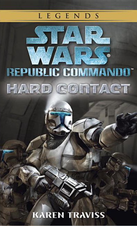 The following article started as a shorter response to one book, Star Wars: Republic Commando: Hard Contact. I had found the depiction of the role of the clones in the Galactic Army of the Republic, and their treatment by the Jedi, to be intensely thought provoking. I went searching online for discourse on the Republic Commando books, or on the broader subject of the treatment of clones in Clone Wars era literature (or other forms of media), only to find very little in the way of formal discourse. It was in discussing my thoughts on the book, and on the lack of existing discourse on the subject, with my partner Joshua that I found myself inspired to fill that gap in the discourse by writing my own analysis to Hard Contact. Joshua encouraged me that if I was going to write on Hard Contact I ought also to include the rest of the books in the Republic Commando quartet: Triple Zero, True Colors, and Order 66. This is where I disclose that I have a PhD in English Literature, and a tendency towards wordiness. What started as an intent to write an average article length response (say, three to eight thousand words) became a larger analytical work that rivals the length of my own Master's thesis. For further context of just how inspired I was by these books: it took me almost a year to write my Master's thesis; it took me about a month to write the first "final" draft of this paper. I also hadn't been inspired to do any kind of creative or academic writing since I finished my PhD in 2017; it is thanks to these books and this project that my passion for writing has been rekindled. What you're about to read is both an analysis of the Republic Commando quartet by Karen Traviss, as well as an argument regarding the role of the clones in the broader narrative of the Star Wars universe, and the larger implications of this regarding the ethics of cloning and the way that our own society treats those we view as "other". This article clocks in at 78 pages (including the Works Cited and Bibliography), so rather than post the whole thing as an overly long blog post, we present it to you, dear readers, as a PDF for download and reading at your method of convenience. I would like to thank my partner, Joshua, for gifting me the first three Republic Commando books last Christmas and sparking the inspiration that grew into this paper. Also for being my first reader and my editor, understanding my very many feelings about the clones and Mando’ade, and encouraging me every step of the way in the creation of this paper. Thanks also to Karen Traviss for developing such a rich part of the Star Wars Expanded Universe, and giving me so much to write about! Canon might have shifted, but your contribution to Star Wars remains valuable and appreciated.
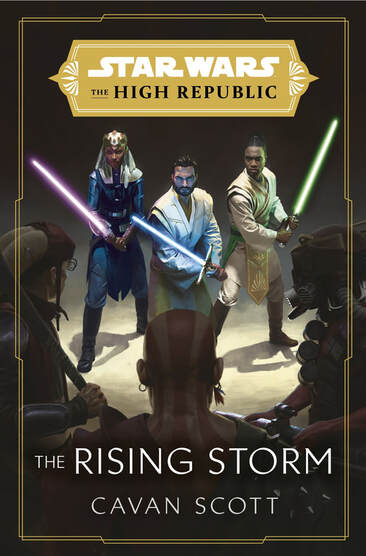 Star Wars: The High Republic: The Rising Storm By Berg Greetings Ladies and Gentlemen, and our readers! Welcome back to our HAR, written edition, continuing on from the previous installment of Light of the Jedi. This time we’re covering the second adult novel in the High Republic series, The Rising Storm by Cavan Scott. As the first release of wave 2 within phase 1 of the series, The Rising Storm sets up the main events of this wave which have ramifications for all the upcoming releases. Overview: It is a time of great joy as the Republic Fair approaches, and the Republic, Jedi, and planet of Valos prepare to welcome citizens a year after the Great Disaster to the celebration of Chancellor Soh’s outreach to the Outer Rim. Elsewhere, the Nihil are also preparing to show that they’ve not been beaten and that Marchion Ro still has some venom up his sleeve. The Good: Multimodal Narrative. Although this is a full story within itself, it also pulls on the threads of all previous publishing endeavors for The High Republic series, linking itself to Light of the Jedi, Into the Dark (YA release), the High Republic (Marvel) and High Republic Adventures (IDW) runs, and A Test of Courage (Middle Grade), by pulling in characters and story lines began in all those works. The story here is so interwoven with the previous releases that we also get a story within the story via the release of Race to Crashpoint Tower by Daniel Jose Older (see below). In these two books, Race and Rising, we get the same scene told from two different character perspectives, while also having the events in each affect and play off of each other. However, each book also works singularly without the reader having to read both. Truly, this is narrative cohesion the likes of which some will wish had been a part of the sequel trilogy. Stellan and Elzar. What does the friendship of two Masters look like? Thinking about previous examples throughout both Canon and Legends, I don’t think I was prepared for the level of complexity, understanding, and forgiveness we would be shown. Avoiding spoilers, I won’t go in to any real level of detail here as this should be discovered as the narrative unfolds. However, it is safe to write that these two Masters are vastly different in their perspectives of the Force, their approach to the Jedi Council, and their greater responsibilities to the Order as a whole, and yet they manage to be accepting of each other in a way that I cannot recall in other works. In fact, they are actually a part of a trio that is missing Avar Kriss as she is off on a different adventure while the events of this book occur, so we are still due to see their friendship from another angle once we get all three together narratively. Politics. A chief complaint of some fans of the prequels is the inclusion of the complicated politics of the galaxy. Inversely, there is a complaint against the sequels that they skip all politics that could help understand and shape the complexities of the time period that could’ve explained the rise of the First Order. At its heart, Star Wars has always had political elements to it; the entry of The Rising Storm helps paint the Republic’s canvas of complex workings in relation to Core members states, the Outer Rim, and the Jedi themselves, while also furthering our understanding of the nature of affiliations within the Nihil themselves. In simpler terms, power, who has it, who’s sharing it, and by whom is it most coveted. The Bad/Ugly: Familiar Gripe. Normally, this section is split in two but I’m still at a loss for things that I really didn’t like or that didn’t work for me. However, we still are inundated with a great many characters and keeping track can be a tad cumbersome. I still maintain that a Dramatis Personae is a much needed tool that would help experienced Star Wars readers and newcomers alike. I would also add that a High Republic specific timeline within each release regardless of publisher be included. Too often the Del Rey releases only add their specific books to the timeline. I know these can be found on the internet, but come on!! Conclusion: What a great time to be a Star Wars literature fan. This era started with a bang and has managed to avoid the sophomore slump with this (these) release(s). I genuinely care about these characters and feel for the dire circumstances that they find themselves in, and that’s entirely credited to the writing team and masterfully complex coordination between authors! 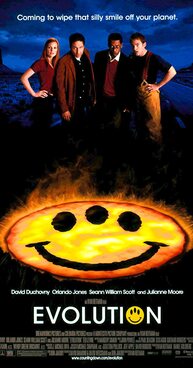 Greetings Ladies and Gentlemen, we're back with a new HAR! The General and Berg get back to fun movie reviews with a pick from the early 200 0's, Evolution. This one is a pick from the General so you can imagine Berg gives a little grief. As always, Listen and Enjoy! Thanks for stopping by. |
H.alf
|
||||||||||||

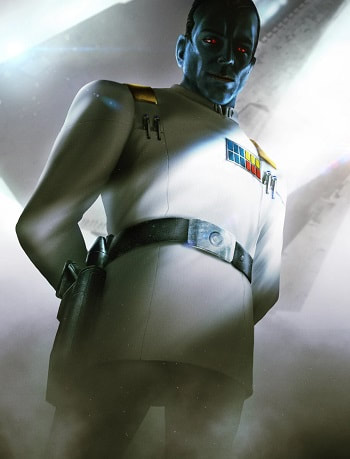
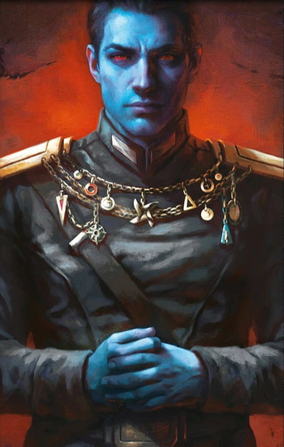

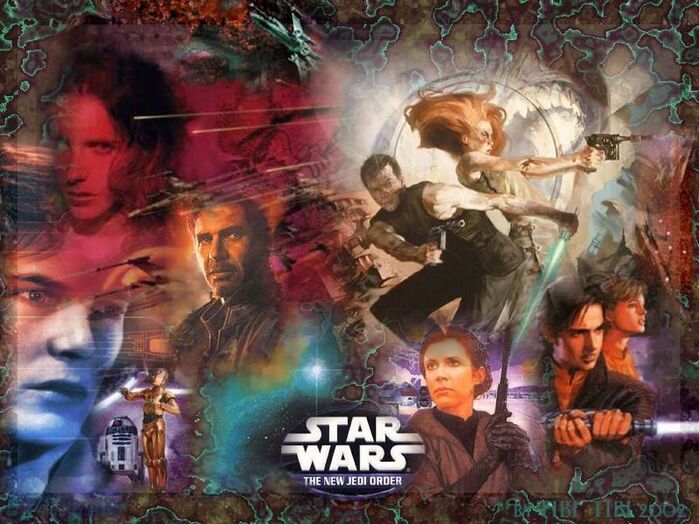
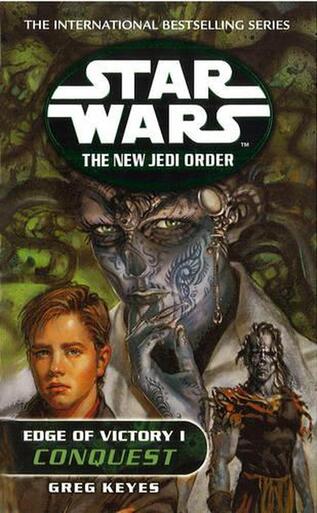
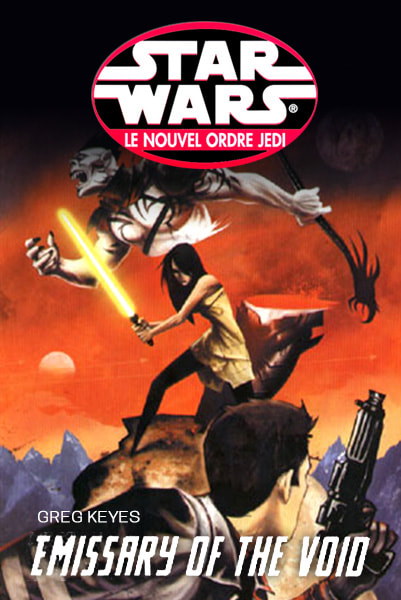
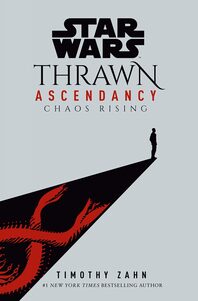
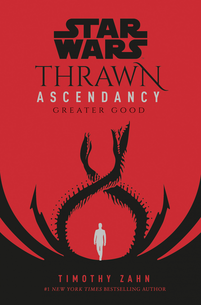
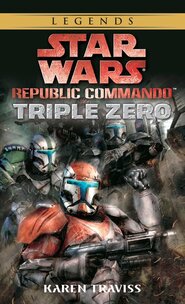
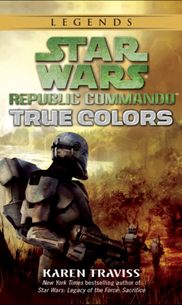
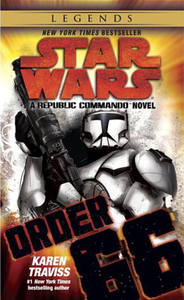
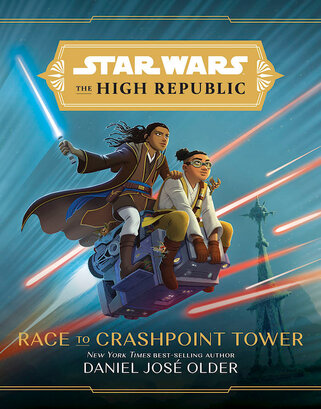
 RSS Feed
RSS Feed